Contrary to popular belief, humans are not the only creatures with opposable thumbs. Rather, it is as if we are in an exclusive club with the few other animals that have this rare trait. Driving, eating, gaming, and much more – you use your thumbs every day, but you may be wondering: what exactly is an opposable thumb? How does it differ from other digits? And what makes it so special?
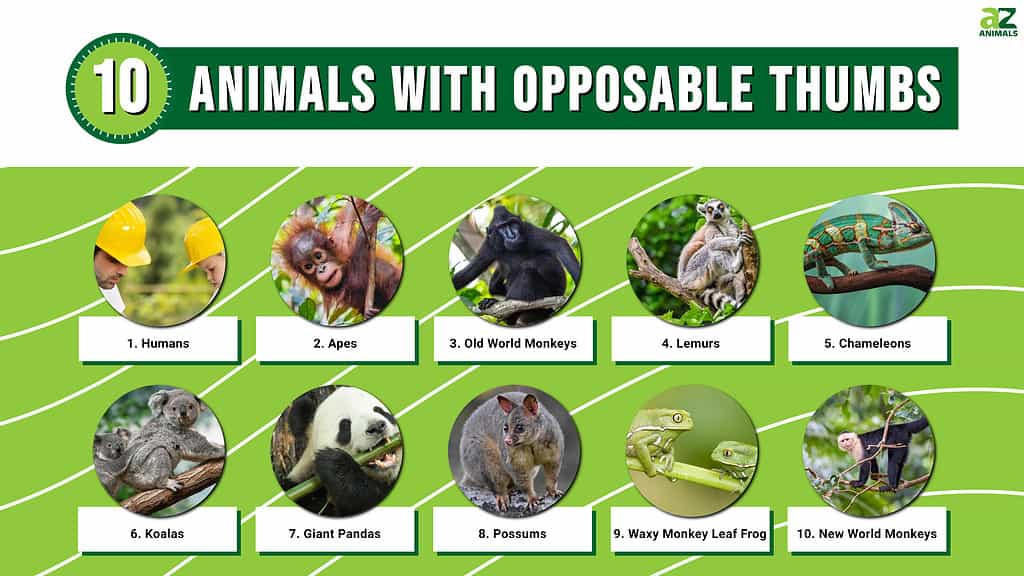
What Is An Opposable Thumb?
Having an opposable thumb means that you are able to rotate and flex your thumb so that it “opposes” or touches the tips of your other fingers, fingerprint to fingerprint. This may not seem very special, but it is – most animals have toes or fingers that flex in only one direction. Imagine using only your fingers to do everything if you had no thumb. The rotating thumb allows us to grasp, hold, and use objects.
Opposable thumbs are one of the defining characteristics that differentiate humans from most other animals. These thumbs are able to move independently of the other fingers and rotate inwards so that they can touch the tip of each finger, allowing for a wide range of movement not seen in most other species.
This type of thumb is extremely important for activities such as typing, writing, holding objects, and manipulating tools. Opposable thumbs also give us a significant advantage when it comes to tasks like opening jars or handling food items easily. The ability to use our opposable thumbs has helped shape human history by allowing us to make complex tools and weapons which would have been impossible without this anatomical feature.
What other animals have rare opposable thumbs? Many primates do. These include the great apes, Old World monkeys, and the primates of Madagascar. A few other mammals and at least one frog species also have opposable thumbs.
Why Are Opposable Thumbs So Rare?
The simple reason is that most animals do not need them to survive. Most mammals, for instance, use their forefeet for walking, climbing, or defending themselves. In these applications, the opposable thumb could get in the way or be easily injured. These animals get along just fine without them.
Even some animals with human-like hands do not have opposable thumbs. Raccoons, for example, use their hands to collect and wash food. Sometimes, they also manipulate other objects. Their hands have sensitive nerve endings that allow them to identify objects by touch, but their hands do not have the same agility as those of primates. And some monkeys have no thumbs at all!
Check out our following list of 10 favorite animals with opposable thumbs.
1. Humans

©Halfpoint/Shutterstock.com
As humans, we rely heavily on our opposable thumbs for many activities of daily life. Try this – take a few minutes and try to do simple tasks without using your thumb. Fold it across your hand to keep it out of the way. Is it difficult to brush your teeth? Hold a fork? Open a door? Use a video game controller?
Humans not only have opposable thumbs, but we can use our thumbs and hands in ways that animals cannot. Bring your thumb across your palm to touch the base of your ring finger and pinky finger. Then, use the tip of each of these fingers to touch the base of your thumb. Animals with opposable thumbs can’t do this. Humans have increased dexterity that allows us to manipulate tools easily.
We may not be the only mammals with opposable thumbs, but we have a host of other characteristics that make us unique in the natural world. For example, we have unusually large brains for our size, and we can think in abstract terms like time and spirituality. We have a descended voice box and a bone below our tongue that is not attached to any other bones – together. These allow us to articulate words. We walk on two legs as a matter of course. And we make up for our lack of hair by wearing clothes. Humans are pretty strange animals!
Learn more about humanity’s place in the natural world.
2. Apes
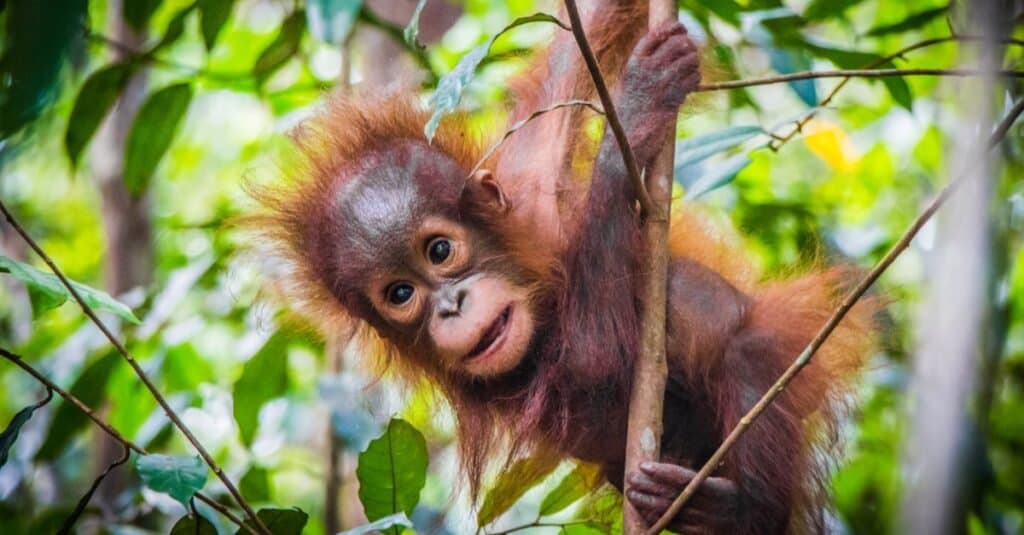
©Alex East/Shutterstock.com
The great apes, including the gorilla, chimpanzee, bonobo, orangutan, and lesser apes called gibbons, all have opposable thumbs. In fact, they take opposable digits a step further – the big toe of the foot is opposable as well!
Humans and apes share 97 percent similarities in DNA. We each have the genetic information that codes for a hand with four fingers and an opposable thumb. But how do the apes use their opposable thumbs?
They use their thumbs to climb trees, grasp branches, and hold tools – for example, using a small stick to gather ants or termites from a nest. Some apes may build shelters of leaves to get out of the rain. They groom one another, pinching pesky insects between the thumb and forefinger. They also use their thumbs in gathering food, such as picking fruit or peeling a banana – a task that would be nearly impossible without an opposable thumb.
3. Old World Monkeys
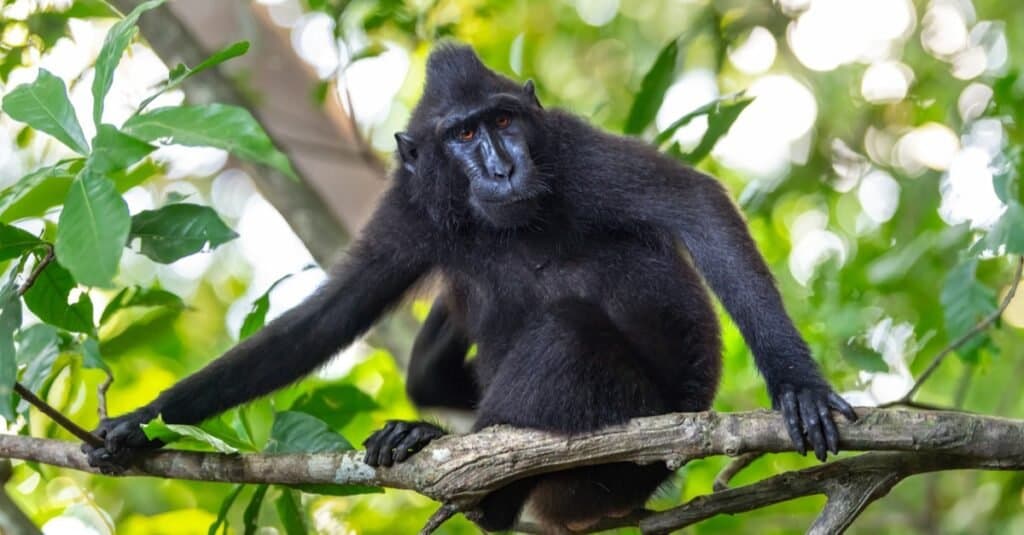
©Sergey Uryadnikov/Shutterstock.com
Old World monkeys are those species native to Asia and Africa, as opposed to the New World monkeys of the Americas. There are twenty-three Old World monkey species, and most, including grivets, baboons, and macaques, use their opposable thumbs for grasping tree branches and other objects.
Not all Old World monkeys have opposable thumbs, though. In fact, the colobus monkey has no thumbs at all!
4. Lemurs

©Ondrej_Novotny_92/Shutterstock.com
Lemurs are primates found only on the island of Madagascar and a few other islands off the coast of Africa. The smallest of the 100 or so lemur species is only 3 inches in length, while others are several feet tall. Some researchers refer to the lemurs’ thumbs as “pseudo-opposable thumbs,” meaning that they are almost opposable but not quite. Like other primates, they use their thumbs for grasping branches and manipulating food. Other primates in the lemur family – pottos and lorises – also have pseudo-opposable thumbs.
5. Chameleons

©Edy Pamungkas/Shutterstock.com
Chameleons use the special thumblike arrangement of the toes on their feet to grasp twigs and branches as they climb. Three toes make up the “medial bundle,” extending from the middle section of the foot. Two toes make up the “lateral bundle,” extending to the side. On the rear feet, this arrangement is reversed, with two toes in the medial position and three extending to the side.
6. Koalas
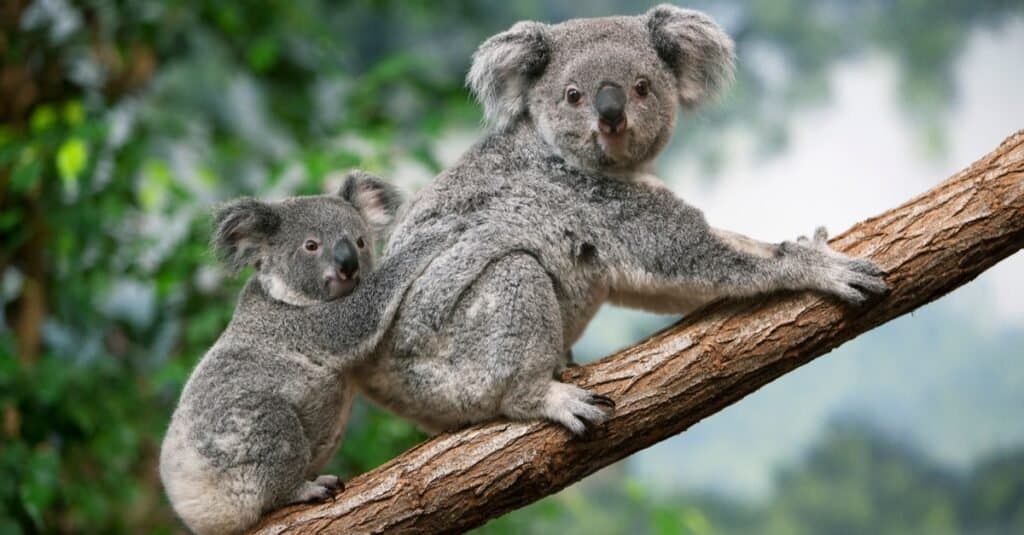
©slowmotiongli/Shutterstock.com
The koala, the famed marsupial of Australia, is unlike any other animal in that it actually has two opposable thumbs. These thumbs are set at an angle to the three fingers. The koala uses these two sections of its hand – the thumbs and fingers – to securely grasp and climb tree branches.
Koalas also have an opposable toe on each foot. That earns them the world record of having six opposable digits!
7. Giant Pandas
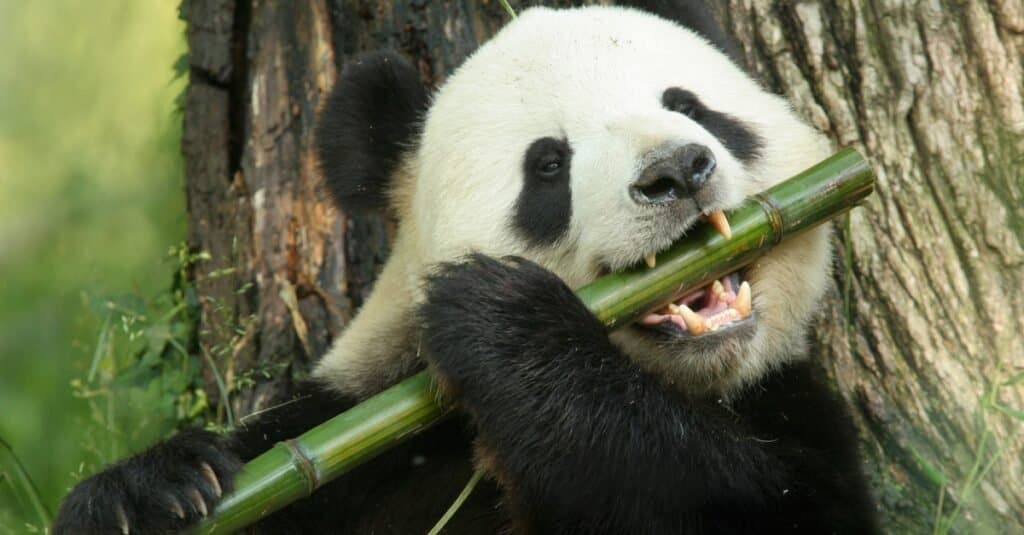
©Bryan Faust/Shutterstock.com
Giant pandas (Ailuropoda melanoleuca) have an opposable thumb that has been called a false thumb. Rather than consisting of the distal and proximal phalange bones, the panda’s false thumb is an enlarged carpal bone – one of the many bones that together form the wrist. The false thumb functions as an opposable thumb opposite the five fingers, though, allowing the panda to grasp bamboo shoots and bring them efficiently to its mouth.
A fun fact about this feature is that it is commonly found in carnivores – whose dietary habits this giant furball tends to dabble in, if only on rare occasions.
What other bamboo-munching creature shares this rather interesting anatomical feature? The adorable red panda (Ailurus fulgens) – has no zoological relation to this large ursine. (Red pandas are actually considered cousins to weasels and raccoons.)
Learn more about giant pandas.
8. Possums and Opossums

.
©Timothy Christianto/Shutterstock.com
Virginia opossums have a number of unique features. They are the only marsupial in North America, carrying young in a pouch like a kangaroo. They have grasping prehensile tails and opposable thumbs (actually, it is the fifth toe) on their hind feet. Together, the tails and thumbs aid them in climbing trees to hunt or escape danger. Interestingly, the opossum’s opposable thumb lacks a nail or claw.
The marsupial possums of Australia also have opposable thumbs. All but two possum species have a first and second toe on the forepaw that are opposable to the other three toes. The clawless first toe of the hindfoot is opposable as well.
9. Waxy Monkey Leaf Frogs

©Milan Zygmunt/Shutterstock.com
Arboreal or tree-dwelling frogs of the family Phyllomedusa are one of only two non-mammals to make our list. These arboreal amphibians, which have a penchant for laying their eggs in a leafy parcel, can be found in Argentina and Panama.
Similar to monkeys and other animals, the frogs use their opposable thumbs to grasp tree branches as they move through the canopy. This is where they get their common names, waxy monkey leaf or tree frogs.
They also keep their skin moist with regular applications of a natural emollient secreted by their limbs which they pass over their backs to prevent dryness while branch-hopping.
10. New World Monkeys
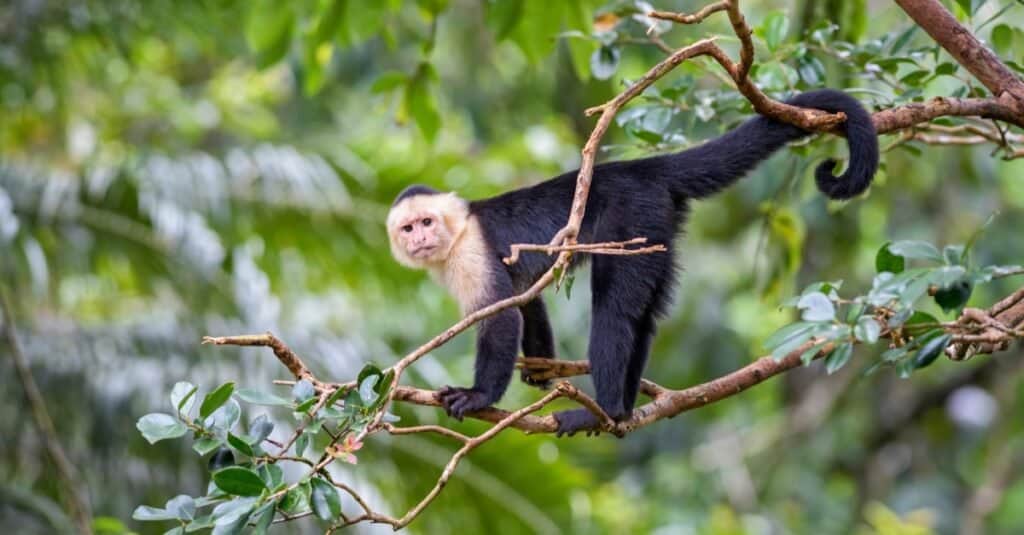
©David Havel/Shutterstock.com
A few New World monkeys – those living in the Americas – have opposable thumbs. These include the saki, ukari, tamarin, woolly monkey, night monkey, owl monkey, capuchin, and squirrel monkeys. Like lemurs and lorises, some of these monkeys are classified as having pseudo-opposable thumbs.
Since New World monkeys evolved in South America, later migrating into Central America as well, they didn’t face competition from other monkeys. Consequently, a few of these small primates developed opposable thumbs and other distinct features, such as prehensile tails, which can grip things. Their noses are broader and flatter than Old World monkeys too.
Summary Of 10 Animals With Opposable Thumbs
| Rank | Animal |
|---|---|
| 1 | Humans |
| 2 | Apes |
| 3 | Old World Monkeys |
| 4 | Lemurs |
| 5 | Chameleons |
| 6 | Koalas |
| 7 | Giant Pandas |
| 8 | Possums |
| 9 | Waxy Monkey Leaf Frog |
| 10 | New World Monkeys |
The photo featured at the top of this post is © Sharon Morris/Shutterstock.com
Thank you for reading! Have some feedback for us? Contact the AZ Animals editorial team.






